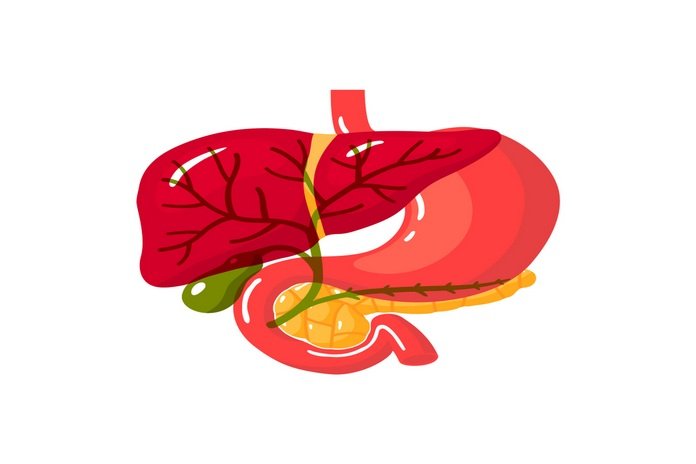The liver plays a significant role in numerous metabolic as well as non-metabolic functions of the body that may range from protein synthesis and blood coagulating to cholesterol, glucose (sugar), and iron metabolism. Being the second largest human organ, liver protects the body from infection-causing organisms, toxins, and free radicals. Liver infection is an intensification of liver capacity that causes decreased functioning of the liver and sickness. The liver is responsible for some basic capacities in the body and any damage to its cells cause deficiency of those capacities and make critical harm the body.
The liver is the biggest strong organ in the body – following the skin; and is likewise viewed as an organ in light of the fact that among its numerous capacities, it makes and secretes bile. The liver is situated in the upper right segment of the mid-region secured by the ribs. It has two principle flaps that are comprised of small lobules. The liver cells receive blood supply from two unique blood supply systems. The hepatic circulation system supplies oxygen rich blood to the liver tissues, while the portal vein supplies de-oxigentaed blood from the digestive system and the spleen.
Regularly, veins return blood from the body to the heart, yet the portal or entrance vein supplies blood supplements and synthetic substances from the stomach. The entry vein likewise effectively conveys the synthetic compounds and proteins that liver cells need to deliver the proteins, cholesterol, and glycogen needed for typical body exercises.
As a component of its capacity, the liver makes bile, a liquid that contains among different substances, water, synthetic compounds, and bile acids (produced using put away cholesterol in the liver). Bile is put away in the gallbladder and when food enters the duodenum (the initial segment of the small digestive system), bile is emitted into the duodenum, to help in the processing of food.
The liver is an organ in the upper right-hand part of your mid-region. It sits under the stomach, and on top of the stomach, right kidney, and digestion tracts. The liver is a dull rosy earthy colored tone, and is formed somewhat like a wedge. It weighs around 3 pounds. The liver has 2 projections. Both are comprised of 8 fragments that have of 1,000 little flaps called lobules. These lobules are associated with little cylinders (pipes) that lead to bigger channels that structure the normal hepatic pipe. The basic hepatic channel sends the bile made by the liver cells to the gallbladder and the initial segment of the small digestive tract (duodenum) through the regular bile pipe.
The liver is made of delicate, pinkish-earthy colored tissues typified by a connective tissue case. This case is additionally covered and fortified by the peritoneum of the stomach hole, which secures the liver and holds it set up inside the mid-region. The peritoneum associates the liver in 4 areas: the coronary tendon, the left and right three-sided tendons, and the falciform tendon. These associations are false tendons in the anatomical sense; rather, they are joined districts of peritoneal layer that help the liver.
The liver is the main organ in the body that can without much of a stretch replace harmed cells, yet in the event that enough cells are lost, the liver will most likely be unable to address the issues of the body.
The liver can be viewed as a processing plant; and among its numerous capacities include:

- Creation of bile that is needed in the assimilation of food, specifically fats.
- Putting away of the additional glucose or sugar as glycogen, and afterward changing over it back into glucose when the body needs it for energy
- Creation of blood thickening variables
- Creation of amino acids (the structure blocks for making proteins), including those used to help battle disease
- The preparing and capacity of iron essential for red platelet creation
- The collection of cholesterol and different synthetic substances needed for fat
- The transformation of byproducts of body digestion into urea that is discharged in the pee
- Processing drugs into their dynamic fixing in the body

